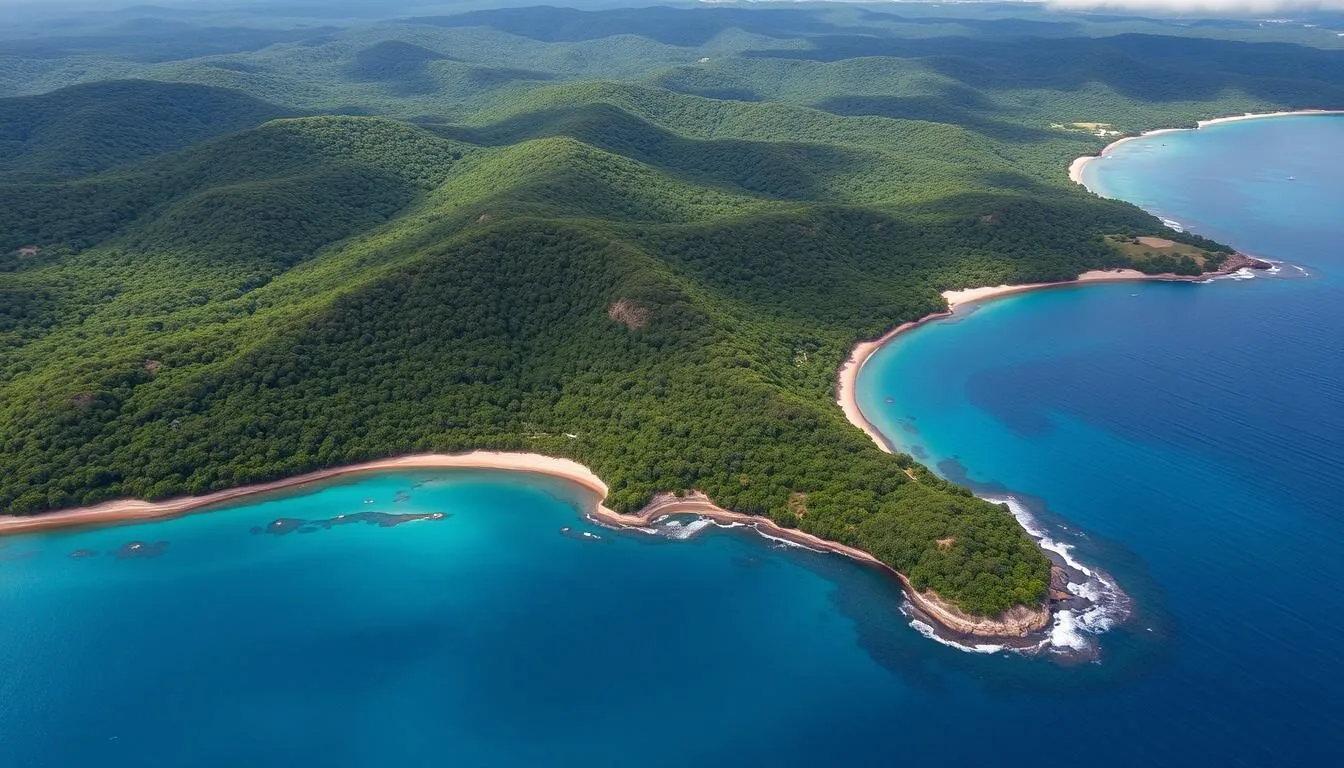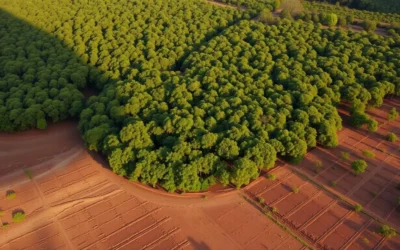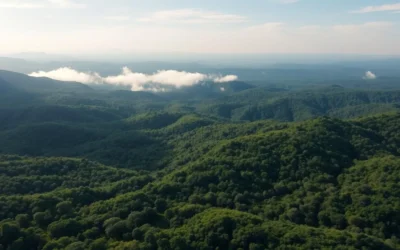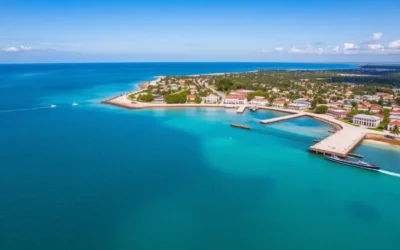Getting There & Planning Your Journey
Masoala’s stunning coastline where rainforest meets the Indian Ocean
Reaching Masoala National Park is an adventure in itself. The journey begins with a flight to Antananarivo, Madagascar’s capital, followed by a connecting flight to Maroantsetra, the gateway town to Masoala located about 750km from the capital. From Maroantsetra, you’ll need to take a two-hour boat ride across Antongil Bay to reach the peninsula.
Ready to Start Your Masoala Adventure?
Find the best flight options to Madagascar and begin your journey to this pristine wilderness.
The park can only be accessed by boat, which adds to its remote charm and pristine condition. Most visitors arrange transportation through their accommodations or tour operators. The boat journey itself is spectacular, offering chances to spot marine life including dolphins and, during the right season, humpback whales.
For those looking to explore independently, consider renting a vehicle in Antananarivo for the journey to Maroantsetra (though be warned, roads can be challenging). From there, you’ll still need to arrange boat transportation to the park.
Need Transportation in Madagascar?
Secure a reliable rental car for your journey to Maroantsetra, the gateway to Masoala National Park.
Best Time to Visit & Weather Tips

Pristine beaches of Masoala during the dry season
Masoala National Park is one of the wettest places in Madagascar, receiving rainfall on approximately 300 days per year. The climate is hot and humid year-round, with average temperatures around 24°C (75°F).
Recommended Months:
- June to October – The dry season offers the most comfortable conditions for exploring, with less rainfall and slightly cooler temperatures.
- July to September – Prime time for whale watching in Antongil Bay as humpback whales arrive for breeding and calving.
- April to May – Shoulder season with fewer visitors and still reasonable weather conditions.
Months to Avoid:
- January to March – The height of cyclone season brings heavy rainfall, potential flooding, and difficult travel conditions.
- November to December – Increasing rainfall as the wet season begins, though still possible to visit.
Traveler Tip: Even during the “dry” season, expect some rain in Masoala. Pack quick-dry clothing, waterproof bags for electronics, and be prepared for humid conditions. The park’s incredible biodiversity is directly related to its high rainfall, so embrace the occasional shower as part of the experience!
Getting Around Locally

Guided hike through Masoala’s dense rainforest
Exploring Masoala National Park requires both patience and guidance. The park’s remote nature and dense rainforest mean that all exploration happens on foot or by boat, with no roads within the protected area.
Essential Transportation Information:
- Local Guides: Hiring a local guide is mandatory for exploring the park and highly beneficial. Guides know where to spot elusive wildlife and can share insights about the ecosystem.
- Hiking Trails: Several trails of varying difficulty wind through the rainforest. Most are unmarked and can become slippery after rain, making a guide essential.
- Boat Travel: Coastal areas and marine reserves are best explored by boat or kayak, which can be arranged through your accommodation.
- Park Permits: Entry permits are required and can be arranged through your accommodation or tour operator.
Explore Masoala with Expert Guides
Book guided tours and activities to maximize your wildlife sightings and rainforest experience.
Where to Stay
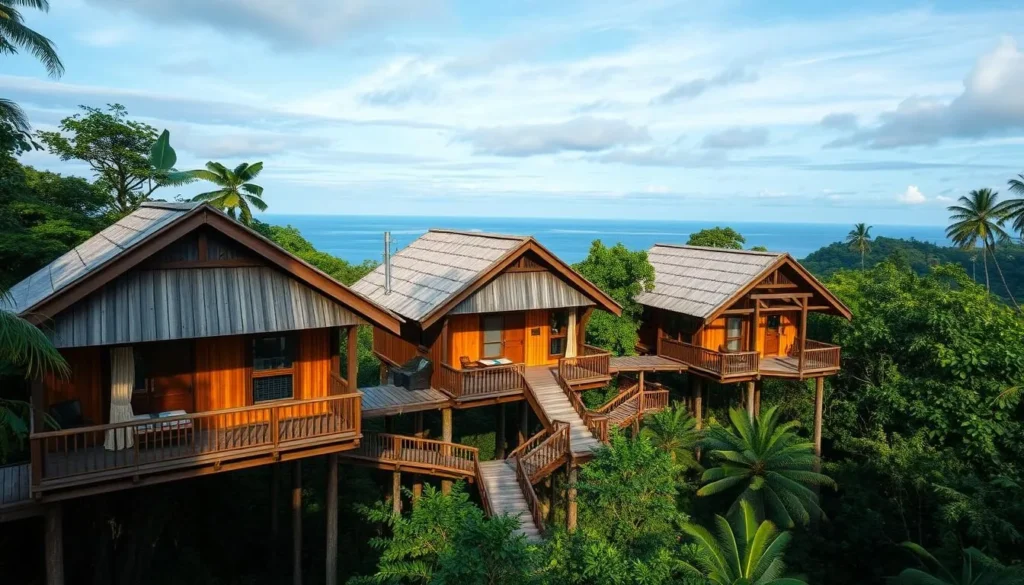
Eco-friendly accommodations nestled between rainforest and sea
Accommodations in Masoala National Park are limited but offer unique experiences in harmony with nature. Most lodges are eco-friendly and designed to minimize environmental impact while maximizing your immersion in this pristine setting.
Luxury Eco-Lodges
A handful of upscale eco-lodges offer comfortable accommodations with amenities like solar power, private bathrooms, and gourmet meals using local ingredients. These lodges typically include guided excursions and boat transfers in their packages.
Price range: $200-400 USD per night
Mid-Range Options
Several lodges offer comfortable but more basic accommodations with shared facilities. These provide good value while still offering access to guided tours and meals prepared with local ingredients.
Price range: $80-150 USD per night
Budget Stays
Basic guesthouses in Maroantsetra provide affordable options for budget travelers. From here, you can arrange day trips to the park, though the experience will be less immersive than staying within Masoala itself.
Price range: $20-60 USD per night
Find Your Perfect Masoala Accommodation
Book your stay in or near Masoala National Park to experience this pristine wilderness.
Dining & Local Cuisine

Fresh local cuisine featuring seafood and tropical ingredients
Dining in Masoala National Park is a unique experience, with most meals provided by your accommodation. The remote location means ingredients are either locally sourced or brought in by boat, resulting in fresh, seasonal offerings with a distinctly Malagasy flavor.
What to Expect:
- Seafood: The coastal location provides abundant fresh fish, shrimp, and crab, often prepared with local spices.
- Rice: The staple of Malagasy cuisine, served with most meals.
- Tropical Fruits: Mangoes, pineapples, bananas, and lychees grow abundantly in the region.
- Local Specialties: Try romazava (a meat and greens stew) or ravitoto (pork with cassava leaves).
- Beverages: Fresh fruit juices, local rum (often infused with vanilla or other spices), and Three Horses Beer (THB), Madagascar’s national brew.
Dining Tip: Most lodges offer full-board packages that include all meals. This is practical given the remote location and lack of restaurants. If you have dietary restrictions, be sure to communicate these well in advance as options for special diets may be limited.
Attractions, Sightseeing & Activities
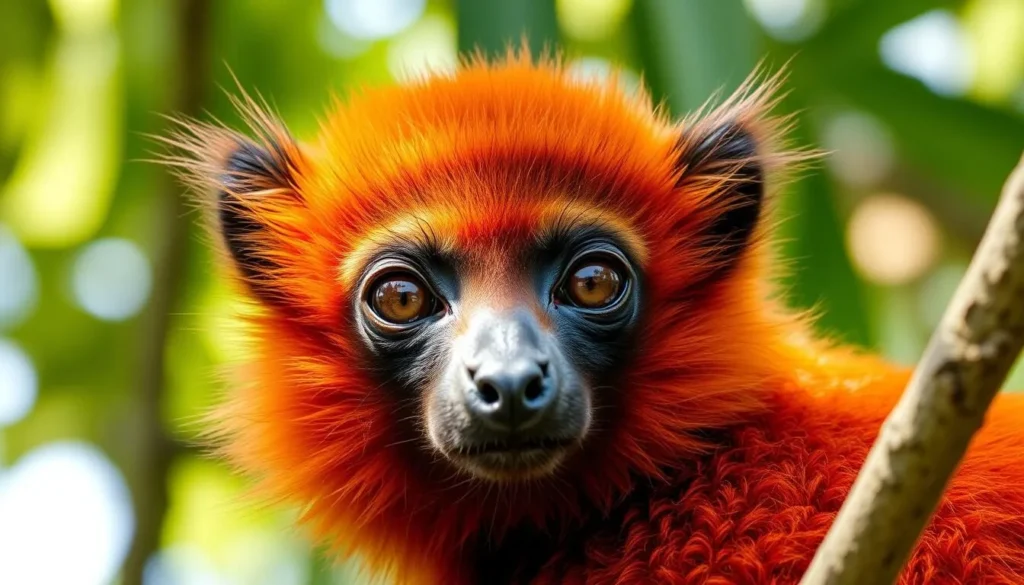
The endangered red-ruffed lemur, found only in Masoala
Wildlife Encounters
Masoala is a biodiversity hotspot with incredible wildlife viewing opportunities. The park is home to ten species of lemurs, including the endangered red-ruffed lemur which is endemic to this peninsula. Other wildlife highlights include:
- The mysterious nocturnal aye-aye
- The striking helmet vanga bird with its massive blue bill
- Various chameleon species, including the tiny Brookesia
- Uroplatus geckos, masters of camouflage
- Madagascar serpent eagles and other endemic birds
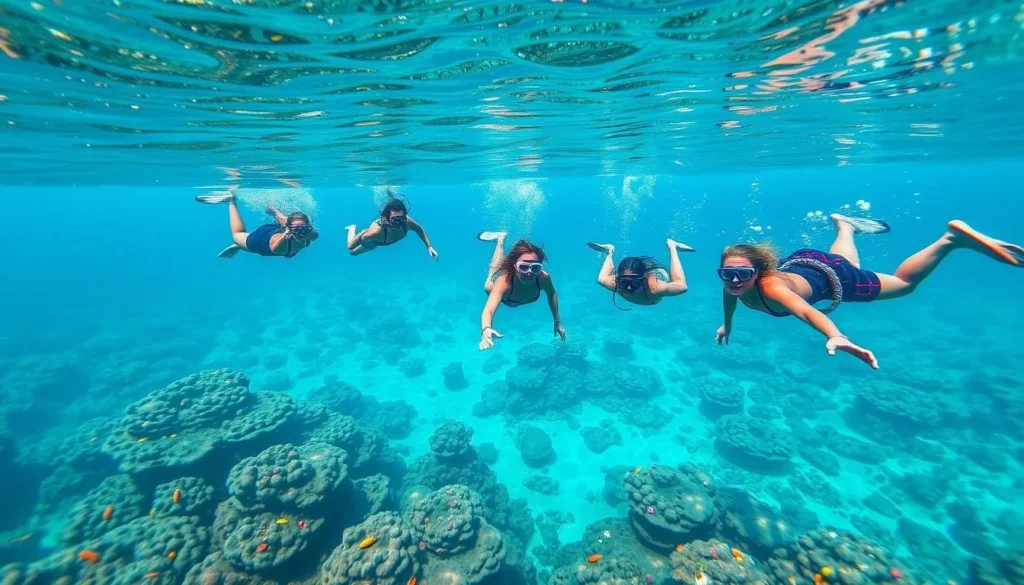
Exploring the vibrant marine life in Tampolo Marine Park
Marine Experiences
The park’s unique location where rainforest meets ocean creates opportunities for both terrestrial and marine adventures:
- Tampolo Marine Park: Snorkel among vibrant coral reefs teeming with colorful fish.
- Whale Watching: Between July and September, humpback whales migrate to Antongil Bay for breeding and calving.
- Kayaking: Explore the coastline and hidden coves by kayak, with chances to spot marine life.
- Pristine Beaches: Discover deserted white sand beaches with sculpted granite formations.
Experience Masoala’s Natural Wonders
Book guided wildlife tours, snorkeling excursions, and whale watching trips with expert local guides.
Cultural Experiences & Local Communities
The Masoala Peninsula is home to the Betsimisaraka people, the second largest ethnic group in Madagascar. Visiting local communities offers insights into traditional Malagasy life and the delicate balance between conservation and local livelihoods.
Cultural Highlights:
- Community Visits: Some lodges arrange respectful visits to nearby villages where you can learn about local customs and daily life.
- Vanilla Cultivation: The region around Masoala is famous for vanilla production. Learn about the labor-intensive process of hand-pollinating and processing this valuable spice.
- Traditional Crafts: Observe the creation of woven items, wood carvings, and other handicrafts that reflect local cultural traditions.
- Conservation Initiatives: Learn about community-based conservation projects that aim to protect the forest while supporting sustainable livelihoods.
Responsible Tourism Tip: When visiting local communities, always ask permission before taking photographs, respect local customs, and consider purchasing handicrafts directly from artisans as a way to support the local economy.
Outdoor Adventures & Activities
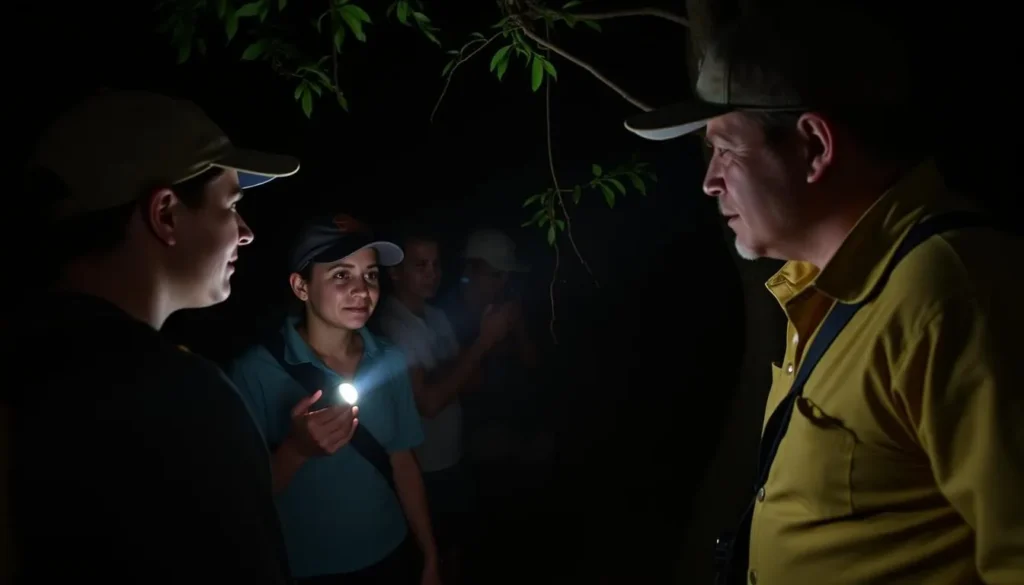
Night walk revealing Masoala’s secretive nocturnal creatures
Masoala National Park offers a range of outdoor activities for nature enthusiasts and adventure seekers. The park’s diverse ecosystems provide opportunities for exploration both day and night.
Rainforest Trekking
Trails of varying difficulty wind through the dense rainforest, offering chances to spot wildlife and marvel at ancient trees. Guided hikes can last from a few hours to full-day expeditions.
Night Walks
Approximately 70% of Madagascar’s lemur species are nocturnal. Evening walks in the forest reveal a different world of chameleons, mouse lemurs, and other creatures that emerge after dark.
River Excursions
Paddle up rivers like the Antalavia in traditional pirogues to discover hidden waterfalls and swimming holes nestled in natural rainforest amphitheaters.

Humpback whale breaching in Antongil Bay during migration season
Ready for Adventure in Masoala?
Book specialized guided tours to experience the best of Masoala’s wilderness adventures.
Location & Map
Masoala National Park is located on Madagascar’s northeastern coast, accessible via Maroantsetra
Safety, Etiquette & Local Customs
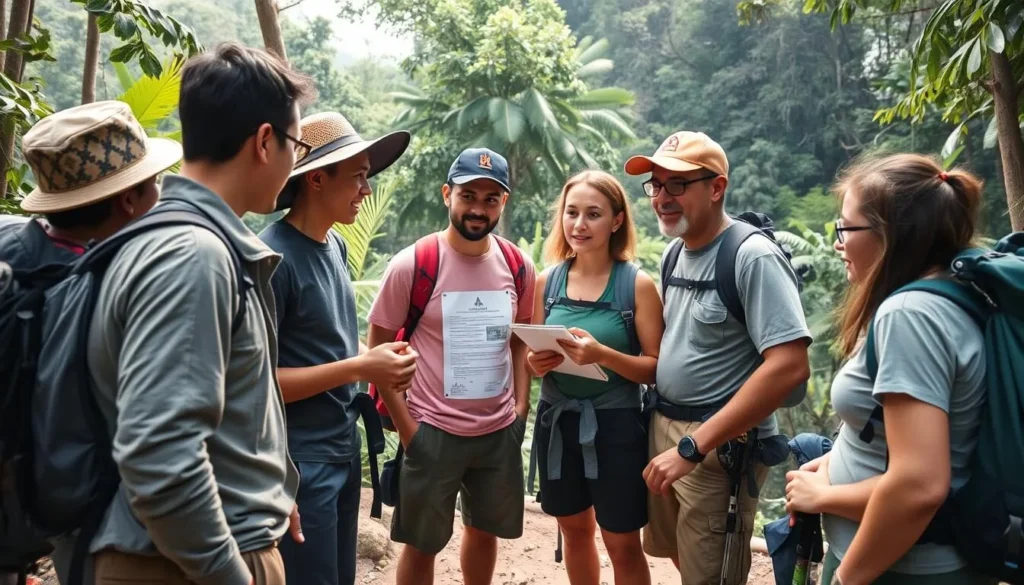
Safety briefing before exploring Masoala’s rainforest
Health & Safety:
- Medical Preparation: Bring a comprehensive first-aid kit as medical facilities are extremely limited. Consider evacuation insurance.
- Malaria Prevention: Consult your doctor about antimalarial medication and use insect repellent containing DEET.
- Water Safety: Drink only bottled or properly treated water. Most lodges provide safe drinking water.
- Marine Hazards: Be cautious when swimming as the Gulf of Antongil is known for sharks. Always follow guide recommendations.
- Leeches: During wet periods, leeches are common in the rainforest. Wear leech socks and closed shoes.
Cultural Etiquette:
- Respect for Fady: Madagascar has many local taboos (fady) that vary by region. Your guide will advise on specific local customs.
- Photography: Always ask permission before photographing people.
- Conservation Etiquette: Stay on designated trails, never remove plants or animals, and follow the “leave no trace” principle.
- Dress Code: When visiting villages, modest dress is appreciated (shoulders and knees covered).
Important: The remote nature of Masoala means emergency services are extremely limited. Travel with caution, listen to your guides, and ensure you have comprehensive travel insurance that covers emergency evacuation.
Practical Travel Tips

Packing essential gear for Masoala’s rainforest conditions
Essential Packing List:
- Quick-dry clothing (multiple sets as humidity makes drying difficult)
- Lightweight, long-sleeved shirts and pants for sun/insect protection
- Sturdy hiking boots with good grip
- Rain jacket or poncho
- Waterproof bags for electronics
- Headlamp or flashlight for night walks
- Binoculars for wildlife spotting
- High-SPF sunscreen and insect repellent
- Basic first-aid supplies
Travel Essentials:
- Visa: Required for most nationalities, available on arrival at international airports.
- Currency: Malagasy Ariary (MGA). Bring cash as ATMs are not available in Masoala.
- Electricity: Madagascar uses 220V with European-style plugs. Solar power is common in lodges with limited hours.
- Communication: Cell service is extremely limited. Inform loved ones of your itinerary before departure.
- Language: Malagasy and French are the main languages. Basic French phrases are helpful.
Booking Tip: Due to limited accommodations and the logistical challenges of reaching Masoala, it’s highly recommended to book your trip well in advance, especially if traveling during the peak dry season (June-October) or whale watching season (July-September).
Experience Madagascar’s Last Untouched Wilderness
Masoala National Park represents Madagascar at its most pristine and wild. From the moment your boat approaches its emerald shores, you’ll be immersed in a world where nature still reigns supreme. The challenging journey to reach this remote paradise is rewarded with extraordinary wildlife encounters, pristine beaches, and the rare opportunity to experience one of Earth’s most biodiverse ecosystems.
As you plan your adventure to this remarkable destination, remember that your visit supports vital conservation efforts and local communities. Masoala isn’t just a destination; it’s an irreplaceable natural treasure that offers a glimpse into Madagascar’s primordial past and a powerful reminder of why preserving such wilderness is essential for our planet’s future.
Ready to Explore Earth’s Last Wild Eden?
Start planning your Masoala adventure today with our trusted travel partners.
The above is subject to change.
Check back often to TRAVEL.COM for the latest travel tips and deals.
